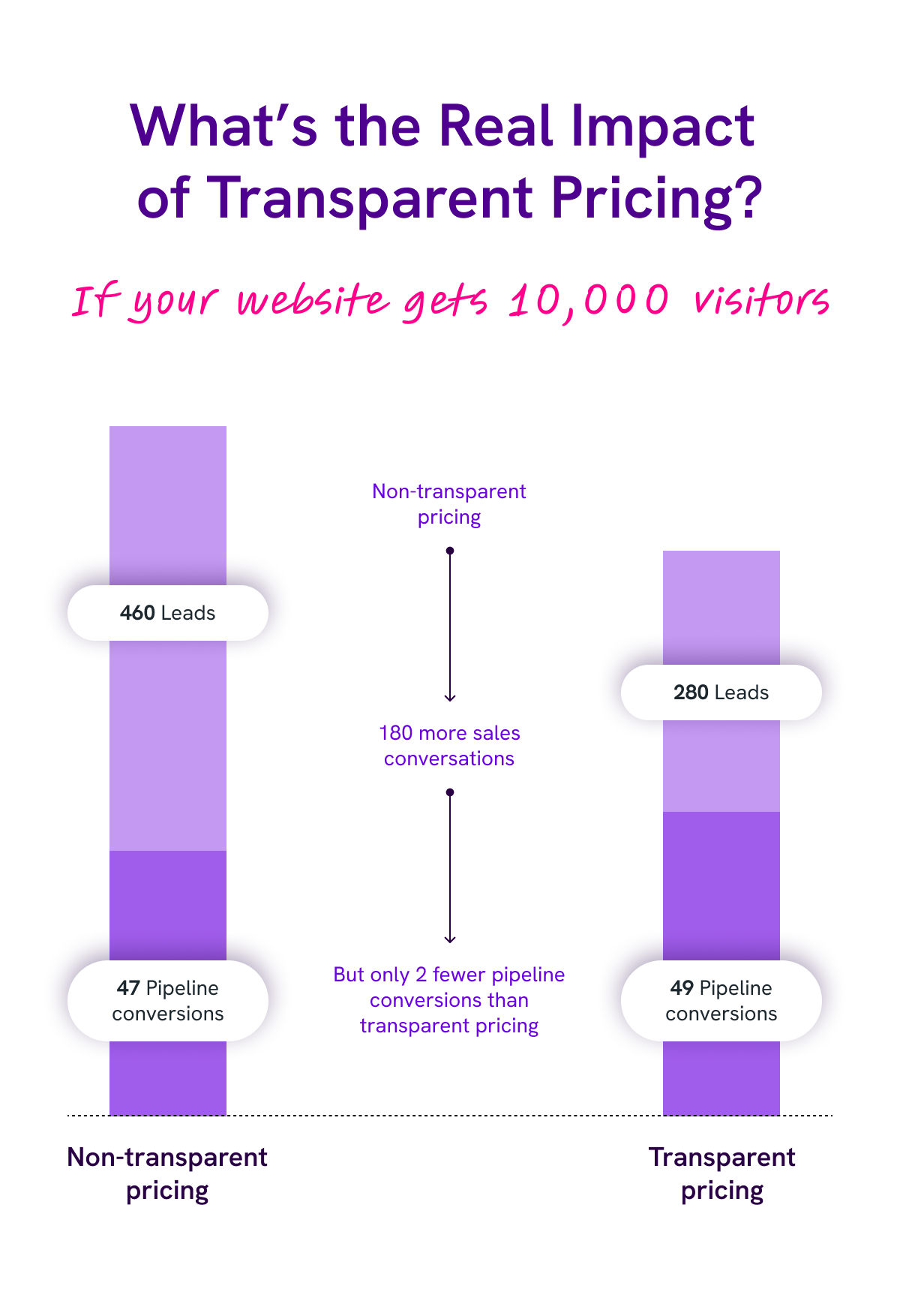Transparent vs. Non-Transparent Pricing: The Real Impact on Sales

Pricing transparency has become a recurring topic in B2B sales conversations. Some view it as a conversion killer; others see it as a catalyst for efficiency. But does it actually make a meaningful difference in pipeline performance?
To answer that, I analyzed the performance of transparent versus non-transparent pricing across B2B websites — and the results were not what many would expect.
Let’s walk through the numbers.

Website Traffic: 10,000 Visitors
- Transparent Pricing (Conversion Rate: 2.8%)
= 280 leads - Non-Transparent Pricing (Conversion Rate: 4.6%)
= 460 leads
At a glance, non-transparent pricing appears to outperform. It brings in 180 more leads from the same volume of traffic — a 64% increase in top-of-funnel activity.
However, when we move further down the funnel, the picture changes.
Pipeline Conversions
- Transparent Pricing (Lead-to-Pipeline CVR: 17.5%)
= 49 pipeline conversions - Non-Transparent Pricing (Lead-to-Pipeline CVR: 10.3%)
= 47 pipeline conversions
Despite generating fewer leads, transparent pricing resulted in two additional pipeline conversions. The total pipeline impact is nearly identical — but achieved with far fewer conversations.
To reach those 47 pipeline opportunities, the non-transparent approach required the sales team to engage with 460 leads. With transparent pricing, only 280 conversations were needed.
That’s 180 fewer meetings, emails, and follow-ups — for essentially the same pipeline outcome.
So What’s the Real Value of Transparent Pricing?
The primary benefit of transparent pricing is not in lead volume. It’s in sales efficiency and lead quality.
Here’s what transparent pricing enables:
- Higher Intent Leads
When visitors see pricing up front and still choose to engage, they’re more likely to be qualified and serious about purchasing.
- Fewer Low-Fit Conversations
Transparent pricing naturally filters out prospects who don’t have the right budget or expectations, saving your sales team from investing time in deals that won’t close.
- More Informed Buyers
By addressing pricing concerns early, prospects come into conversations with clarity and confidence — often shortening the sales cycle.
- Increased Trust
Openness about pricing builds credibility. Buyers increasingly expect transparency, especially in competitive categories where pricing is a key decision factor.
- Better Sales Prioritization
With fewer but higher-quality leads, sales teams can focus on the right opportunities and spend more time moving deals forward rather than qualifying them out.
A Strategic Shift in Optimization
This data highlights a fundamental misalignment in how many teams evaluate pricing strategy.
If you’re optimizing for lead volume, non-transparent pricing might seem more effective. But if your focus is on pipeline performance and sales productivity, transparent pricing offers significant advantages.
More leads don’t always translate to more value — especially if a large portion of them are unqualified. The cost of managing unfit leads can be high: wasted time, longer sales cycles, and a burnt-out team.
In contrast, transparent pricing streamlines the funnel. It may reduce the number of initial inquiries, but the ones that do come in are more likely to convert — and require less effort to do so.